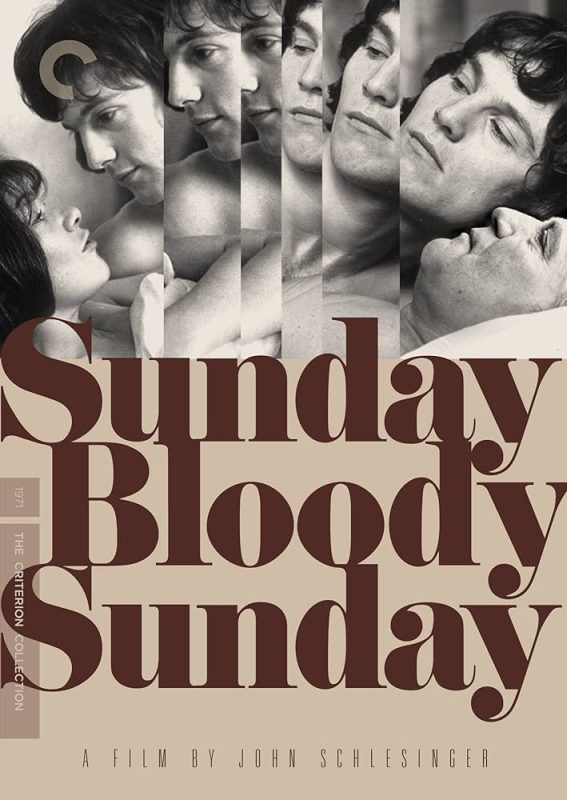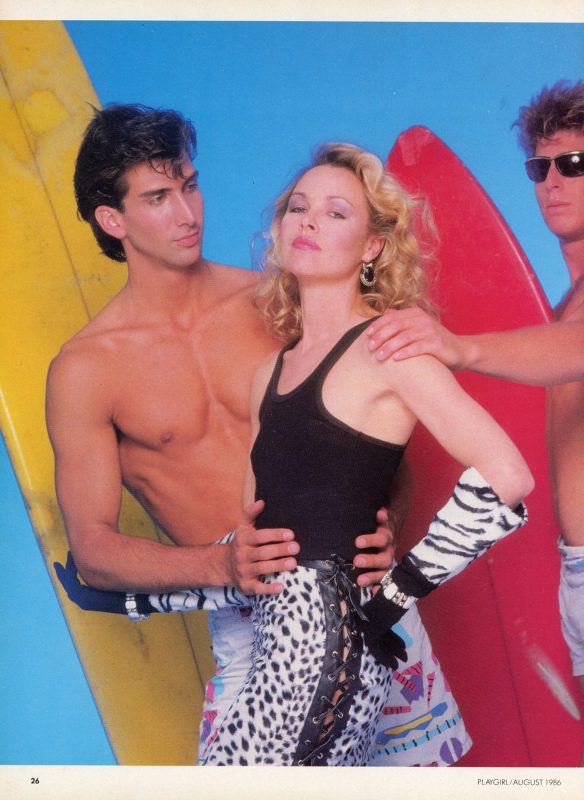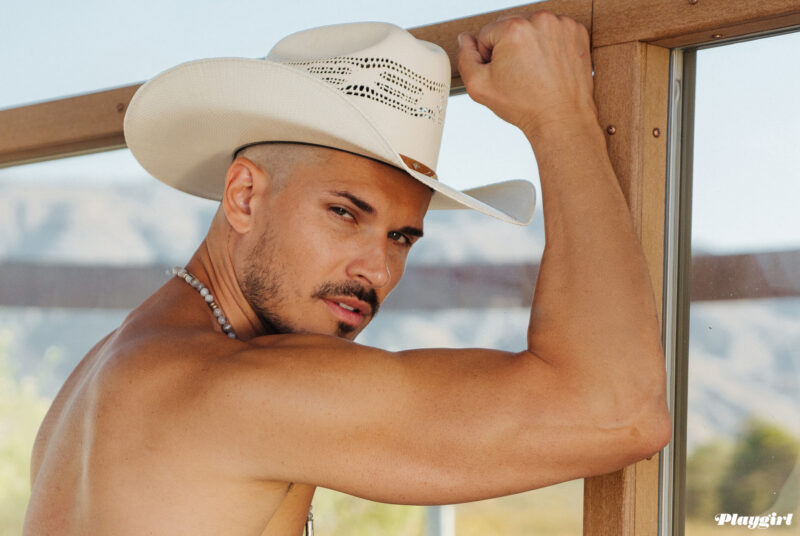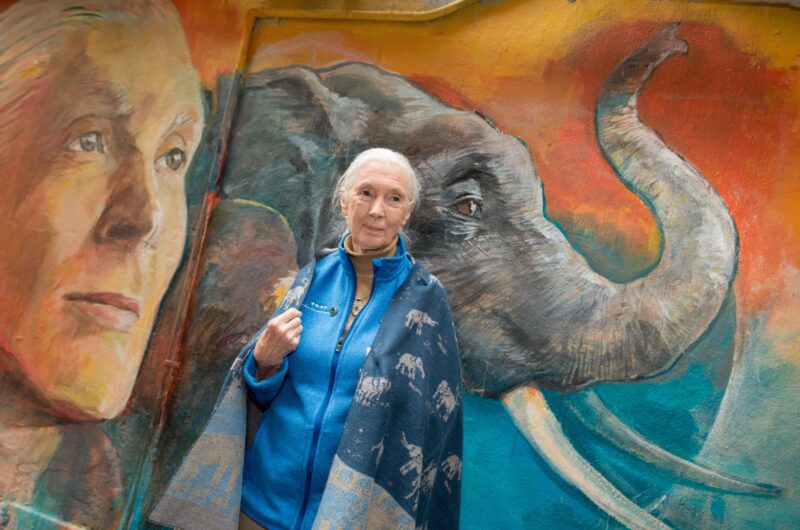Polyamory is the new orange, or the new forty –it’s hard to keep up with what’s trending these days. Cool or not, it is the relationship style you keep hearing about, and for good reason. It provides a different perspective on how to be in relationship/s and what love looks like.
If you have been living under a cock all this time (it is Playgirl after all), then maybe you don’t know what it is. A subset of consensual, ethical non-monogamy (ENM), polyamory is a relationship model that involves sexual, romantic and/or emotional relationships between two or more partners and can be practiced at least a dozen different ways.
Not all partners have sex, or even romantic relationships, with one another. In fact, polyamory is a diverse movement that shares much overlap with the LGBTQ+ community. Polyamory is about you doing you, and doing other people, whatever “doing” means in terms of intimacy. It is based on the principle of “compersion,” defined as experiencing joy for another person’s happiness, and is contrary to the idea of jealousy.
William Winters is the founder of the Bonobo Network, an online and in-person community that teaches about sexuality and pleasure education and alternative relationships, and supports members in living their most authentic lives. Since its inception in 2010, it has grown from a 25-person birthday gathering to a membership community with over 2,000 active members.
“The point is to create a world where people understand that they have a choice, and where those choices are respected and resourced,” said Winters. “People should be at liberty to design relationships that work for all folks involved.”

Sunday Bloody Sunday
Misha Bonaventura, codirector of Bonobo Network, says there’s this “naive thought that polyamory is all about being able to have sex, fall in love, and feel the excitement of new relationships with more people. The reality is that, if you let it, it will crack you open so you can learn to ask for what you want, listen to those around you, and be with what is.”
For those who choose to design their own relationships, polyamory can be an exploration of both spiritual and emotional health. When her plans for marriage didn’t work out, Bonaventura realized, “I didn’t ever want to give someone that much control over my future, my mental health, nor my north star. I decided to look at my relational issues and become more centered in myself. That let me to exploration through open relationships.”
What has helped polyamory prosper? Alongside women’s lib and divorce rates skyrocketing, marriages are happening later in life, perspectives are evolving and there’s more desire for personal autonomy and agency. “The twentieth century did real brand damage to monogamous marriage,” says Winters. “Economically speaking, women no longer had to put up with men’s bullshit, and marriage became more about happiness than economics.”
Before 2007, there was little cultural understanding of ENM and very little media representation. Diana Adams (they/them), an attorney and Executive Director of Chosen Family Law Center, the first nonprofit to provide free legal services and legislative advocacy to polyamorous families, says they were the first individual to come out in the NY Times as polyamorous in 2008.
Over the past decade, the tides of a society once hellbent on soulmates and forevers is moving away from “I do,” as more younger people are recognizing that “I don’t” is just as valid. “Gen Z and younger have grown up with more media representation of both queerness and polyamory,” says Adams. Winters adds, “ENM practice thrived in queer cultures, especially when the institution of marriage provided no solace or comfort to them. It makes great sense to me that the acceptance of queer identity and culture in America would also lead to acceptance of queer approaches to relationships.”

Couple to Throuple • Courtesy of Peacock.
These queer approaches to relationships are being written into the storylines of TV and movies, in shows like the Spanish mini-series La edad de la ira and the Australian show Please Like Me. In the United States, the TV show The L Word, as well as reality shows like Polyamory: Married and Dating and the new Peacock TV show, Couple to Throuple, highlight nonmonogamy as an option.
Ethical, consensual non-monogamy isn’t a new idea. Some of the most radical views on marriage were spoken by the activist Emma Goldman in the late 1800s. In this century however, it’s easier to get ideas across, especially with the Internet being a quick and easy way to find connection and community regardless of geographic distance.
Exploration is key to understanding who you are, but poly isn’t problem free. Even poly people cheat. It requires a PhD in communication (as Kamal Devi once highlighted in her reality TV show, Poly Married and Dating). For some, it isn’t safe to be out, which can create a whole slew of dynamics. “Those who have the privilege of whiteness, or have less fear about employment repercussions, are more likely to feel safety in being out,” adds Adams.
“Recent articles have stereotyped polyamory as a privileged white community, but demographically that isn’t the case,” adds Adams, who is passionate on helping people who are otherwise underrepresented. They co-founded the Polyamory Legal Advocacy Coalition, a coalition which drafted, and passed, the first laws in several cities in the US for multi-partner domestic partnership as well as the first relationship structure non-discrimination laws.
If you decide to go down the poly road, even a little bit, Bonaventura has this advice: “Be gentle with yourself and others. We’re all fumbling along undoing the dominant cultural conditioning of monogamy and individualism. Practicing the possibility of whatever your ideal relationship structure might look like is very different than living it and being confronted by the reality of your personal and psychological limits.”

La edad de la ira • Courtesy Atresmedia.
Some people prefer being serial monogamists, and that is an excellent choice for those who prefer that option. Other people don’t believe that a one size fits all approach is the right choice for them. It’s also okay to go back and forth as you navigate your ideas around monogamy and nonmongamy. There is no one way, style, or idea that works for everyone, and being polyamorous doesn’t mean that you can’t decide to be monogamous in a relationship.
Whatever you decide, Winters has wise words, “Go slow. Take small bites. Realize that healing the attachment traumas inflicted by a culture oriented around compulsory monogamy may not happen quickly – or at all.”
If you’re looking to explore polyamory, the good news is there are plenty of resources. From the original The Ethical Slut to books like Polysecure, Open Monogamy and Open Deeply, to social media influencers, and celebrities like Janelle Monáe and Bob the Drag Queen, who recognize, and support, alternative relationship styles, there’s a voice for you. Plus, there are more coaches and therapists who are open and available, and there are communities, including Bonobo Network, that can help you choose your own adventure.







